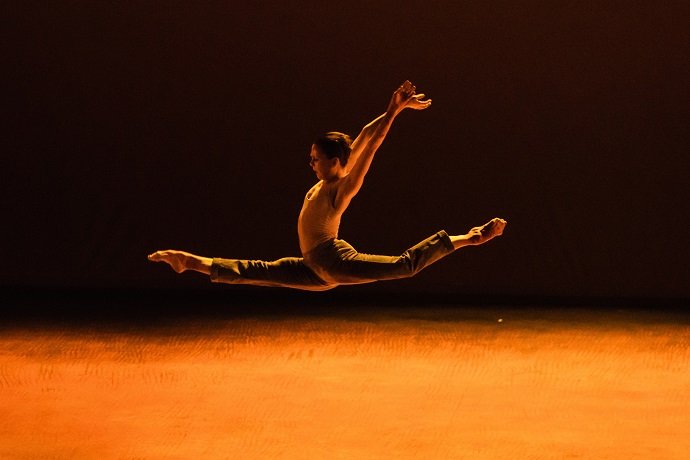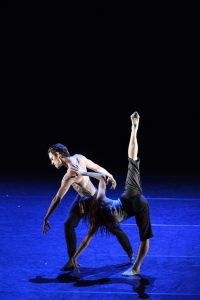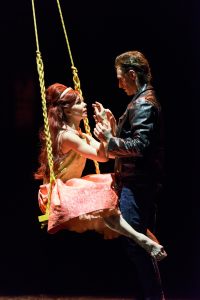
Sadler’s Wells, London
By Sarah Kirkup
Commissioning three works for Sadler’s Wells is a brave thing for a ballerina to do, particularly when she’s only 29 and at the peak of her classical prowess. Natalia Osipova, principal of The Royal Ballet, has dabbled in modern dance – she has created roles for Wheeldon and McGregor, and collaborated with Sidi Larbi Cherkaoui, Ohad Naharin and Arthur Pita – but committing so fully to contemporary is still a bold move. It paid off for Sylvie Guillem, but she was in her forties; Osipova, though, is someone who follows her heart: ‘There are people who could do it better,’ she says, ‘but I put my soul into it’.

The first piece, Qutb – Arabic for ‘axis’ or ‘pivot’ – is by Cherkaoui, who created Mercy, part of Solo for Two, a programme performed by Osipova and her former boyfriend Ivan Vasiliev in 2014. This time, to evocative Sufi music, Osipova joins two dancers from Cherkaoui’s world: James O’Hara and Jason Kittelberger. Where Osipova is poised, they are reckless. Where she has line, they have fluidity. Perhaps Osipova’s ‘classicism’ is appropriate – as Cherkaoui says, ‘Osipova represents Venus, O’Hara is Earth and Kittelberger embodies Mars.’ But while the trio create interesting shapes – limbs interweaving, energy ebbing and flowing – the standout moment is O’Hara’s solo. When dance can be this grounded and human, one wishes all three dancers could move the same way.
There’s a palpable frisson when Osipova and current boyfriend Sergei Polunin appear in Russell Maliphant’s Silent Echo, even though, tantalisingly, they don’t touch each other until the end. The bare-chested, heavily tattooed Polunin – on the brink of deserting ballet until Osipova asked him to dance Giselle last year – and the pale, elfin-faced ballerina make a striking couple, on and off stage. Maliphant plays to their strengths, exploring the meeting point between classical and contemporary, but it almost feels too classical. Then again, when someone can jump like Polunin, who can blame Maliphant for not celebrating it? The main obstacle is Scanner’s multi-layered, technology-infused soundscape, which becomes an annoying distraction.

We’ve witnessed Osipova’s strengths as an actress in the classics but, in Pita’s Facada (2014), she surprised us with her gift for comic melodrama. In Pita’s new, 1960s-inspired work, Run Mary Run, Osipova is again in her element as the sassy Mary who can’t get enough of her bad-ass boyfriend, Jimmy. Enter Polunin, leathered up, shooting up and raring to go. The costumes are fabulous (how does Osipova dance in those killer heels?), the staging quirky, and the music – by The Shangri-Las – spot on. The story of an obsessive relationship, a fatal overdose, and a broken heart sounds dark, but there’s humour aplenty, from the two hands (his and hers) popping out of the grave and ‘dancing’ together, to the ingenious choreography involving a cigarette, a lighter, a glass and a bottle of whisky. Not to mention where Jimmy wins Mary back by kissing her – rhythmically, repetitively – on her hand and up her arm, before alternating between her inner thighs while she’s upside down. There’s mock-1960s jiving, but adequate original material too (for which Osipova ditches the heels and goes barefoot). Perhaps their acting skills are showcased over their dancing abilities (although Polunin has a fantastic graveside solo, kicking up the dirt like an angry James Dean), but finally it seems that Osipova has found her comfort zone. ![]()